A 12th Century Landmark in Indian Desert-The Jaisalmer Fort
Jaisalmer fort
Jaisalmer fort is located within the sandy expanse of the Thar desert on the Trikuta hill in Rajasthan. Surrounded by a thriving city, the fort is known for palaces, residences, shops, and temples. The Jaisalmer fort is one of the few living forts, not only in India but in the entire world. The golden-colored sandstone used in the fort has earned it the name of “Sonar Qila” or the Golden Fort. This ‘Golden City’ is located close to the Pakistan border, and acts as the guard to the western Rajasthan frontier. In 2013, Jaisalmer Fort, along with five other forts of Rajasthan, was declared a UNESCO World Heritage Site.
Jaisalmer Fort History
The Jaisalmer fort is believed to have been built by a Bhatti Rajput called Rawal Jaisal in 1156 CE. Fort history started with its inception in the 12th century. Rawal Jaisal, the eldest heir of the Rawal of Deoraj, was passed over for the throne of Lodurva and a younger half-brother was crowned king. Rawal Jaisal went looking for a new location to set up his capital when he came across sage Eesul. The sage told him about Krishna’s prophecy which said that a descendant of his Yaduvanshi clan would found a new kingdom at this same spot. It was in 1156 that Rawal Jaisal constructed a mud fort, named it Jaisalmer after himself, and declared it his capital. The Trikuta hill and the vast expanse of desert surrounding it was considered to be a well-protected site for building the new fort.
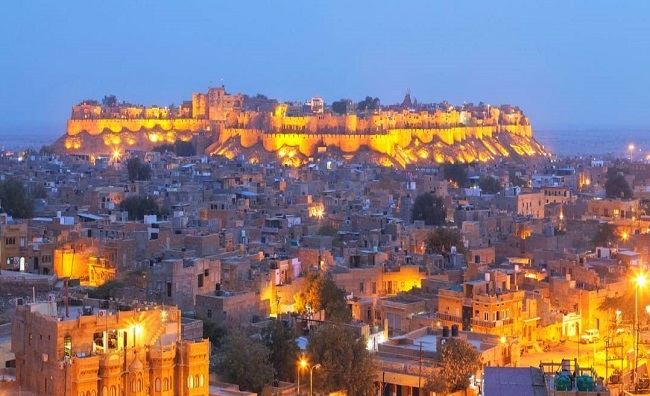
The Bhattis ruled in relative peace until the 16th century CE when the Mughals laid their eyes on the fort. This prompted the then king of Jaisalmer, Rawal Har Rai, to sign a treaty with the reigning Emperor of Delhi, Akbar, in 1570 CE. Under the terms of this treaty, Har Rai accepted Mughal suzerainty and gave his daughter in marriage to Akbar. This initiated an era of peaceful coexistence between the Bhattis and the Mughals that resulted in the flourishing of art and architecture during the 17th and 18th centuries.
Also, read- Best Things to do in Palm Spring California
Inside Jaisalmer Fort
The Jaisalmer fort is a typical example of a desert fort, with tall and thick walls punctuated by projecting bastions and defensive gateways. The Jaisalmer fort is located on Trikuta hill at an elevation of 250 feet above the surrounding countryside. The area of the Jaisalmer Fort is about 460 meters by 230 meters. It has a triple-ring defense architecture in place with three concentric fortification walls. The outermost wall has 99 circular bastions and corner towers that surround the fort. The uppermost fortification walls have Kanguras or gun holes and jharokhas or protruding windows which provided a view of the outer walls. Unique additions were made to the fort to align the construction to the surrounding terrain. A pitching wall was built which held the clayey soil of the hill in place. A Mori or a pathway was built between the inner and outer walls which allowed soldiers and horses easy access throughout the fort in times of war.
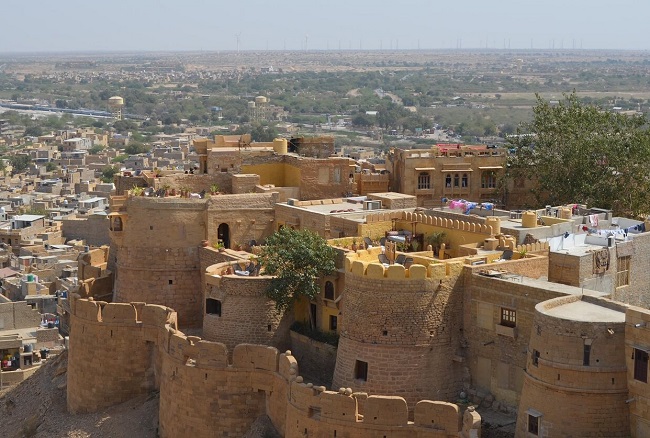
The fort includes four massive towering gateways – Ganesh Pol, Akshya Pol, Suraj Pol and Hawa Pol, which were successive entry points leading to the core citadel area. Each of these gateways was topped with heavy iron spikes preventing the enemy from scaling them down easily. The entrances lead to the upper citadel area where a centrally located royal courtyard is encircled by a network of beautiful palaces. This royal square, also known as Dussehra Chowk, formed the city’s nucleus and was the public space where the traders and visitors met the King and the community. The King’s throne occupies one corner of the square. The royal palaces surrounding the square are the Rang Mahal, Gaj Vilas, Bada Vilas, Moti Mahal, Sarvottam Vilas, and Zenana Mahal. The Jaisalmer fort is also home to several Jain temples. Some best places situated on Fort premises are- Lakshminath Temple, Merchant Havelis, Dusshera Chowk, Vyas Chhatri, and Gopa Chowk.
Attraction near Jaisalmer Fort
GADISAR LAKE
Gadisar Lake also called Gadaria Lake was built by the founder of Jaisalmer, King Rawal Jaisal in 1156 AD. This lake is an artificial lake. The lake is located about 1.5 km from Jaisalmer Fort. It is said that this lake once provided water to the entire city. Presently, the water comes from the Gadisar Lake from Indira Gandhi Canal.
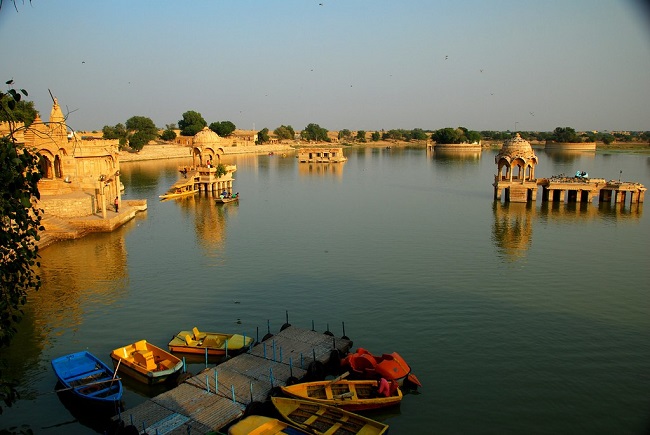
NATHMAL JI KI HAVELI
Nathmal ji ki Haveli is built by two architect brothers in the 19th century. They worked on the haveli from two sides and the outcome is a beautiful blend of the symmetrical structure. Miniature-style paintings and mighty tuskers carved out of yellow sandstone, were used in decoration.
SALIM SINGH KI HAVELI
The Haveli was built in the 18th century and a part of it is still occupied by descendants of the original residents. The high-arched roof is supported by carved brackets designed in the shape of peacocks. Legend has it that there were two additional wooden stories that made it match Maharaja’s palace in height, but he ordered for the upper level to be demolished.

PATWON KI HAVELI
Patwon ki haveli is Jaisalmer’s largest and most elaborately carved Havelis. The five-story structure sits proudly in a narrow street. It lost some of its early glory, but a few paintings and mirror work art can still be seen on the inside walls.
AMAR SAGAR LAKE
Amar Sagar Lake has located about 7 km towards the western outskirts of Jaisalmer. It is an oasis lying adjacent to the Amar Singh Palace. The area that includes the palace and the lake is home to several ponds and wells, along with an old temple dedicated to Lord Shiva.
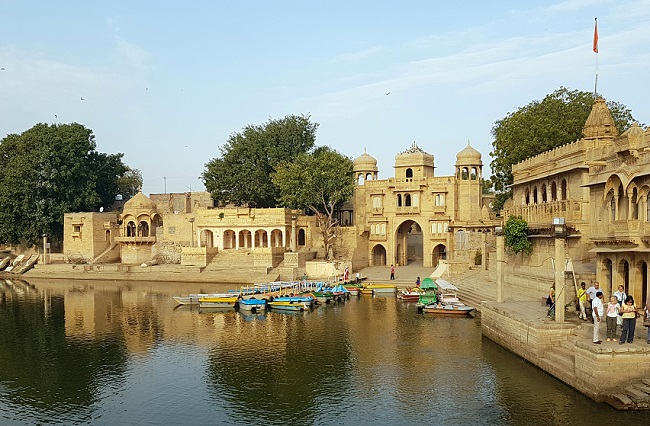
AKAL WOOD FOSSIL PARK
If geology interests you, then Akal wood fossil park is the best place to see it. It is located about 15 kilometers away from the city. Here, one can discover and trace geologic incidents that occurs in the past, about 180 million years ago. The Akal Wood Fossil Park is a 21-hectare preserved area where numerous fossils of the Jurassic age can be seen.
MANDIR PALACE
The 5 storeyed majesties of the Badal Mahal are enhanced by its pagoda-like Tower. Each floor of the palace has an intricately carved balcony. The Badal Palace owes its beauty to the skills of Muslim craftsmen who molded the tower in the shape of a Tazia.

BADA BAGH
Bada Bagh, lies about 6 kilometers north of Jaisalmer, also known as Barabagh (literally Big Garden). This garden complex houses chhatris or royal cenotaphs of the Maharajas of Jaisalmer. The location of the garden is such that it offers wonderful sunset vistas to tourists.
DESERT NATIONAL PARK
The Desert National Park displays the best of the Thar desert’s ecosystem and its varied wildlife. The Park is formed of undulating sand dunes, jagged rocks, and dense salt lake bottoms. Various species of animals such as black buck, chinkara, and desert fox inhabit the Park. In winter, the park hosts an incredible variety of migratory raptors such as Himalayan and Eurasian Griffon Vultures, the Eastern Imperial Eagle, and the Saker Falcon.
JAIN TEMPLES OF JAISALMER
The Jain Temples located inside the Jaisalmer Fort date back to the 12th and 15th centuries. The temples are dedicated to Rikhabdevji and Shambhavdevji, famous Jain ‘Tirthankars’. The structures are carved out of yellow sandstone. They have been built in the famed Dilwara style which is known for its beautiful architecture.
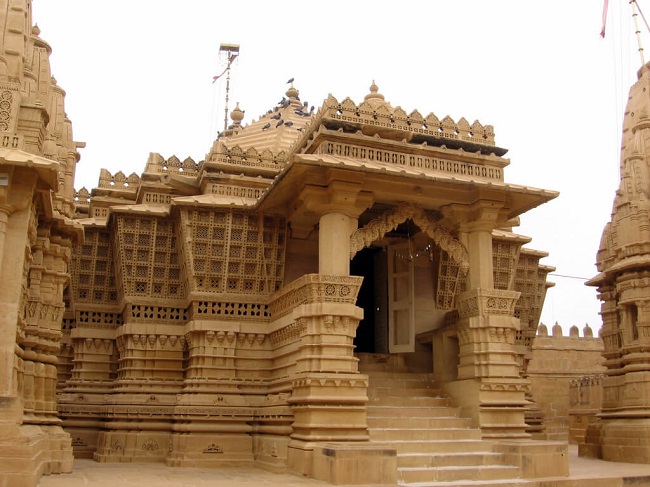
KULDHARA
Kuldhara is an abandoned village and one of the most haunted places in India. Located about 18 km from the city of Jaisalmer the old town that was abandoned by its villagers in the 1800s. It was like the entire town vanished in the course of a single night. With about 85 villages full of people, it remains a mystery as to how no one saw them leave; in fact, even to this date, no one knows where all of them went either. The location has become a major tourist destination as people from all over the world travel here to revel in the mysteries of the past.
How to reach Jaisalmer Fort
The closest domestic airport is Jodhpur Airport, which is the best way to reach Jaisalmer by air. Jaisalmer is easily reachable by direct trains from Delhi, Jaipur, and Jodhpur. Once you reach Jaisalmer it is very easy to reach the Jaisalmer fort as it is at a walkable distance from the city. Travelers can take a cab, rickshaw, or autorickshaw also.
Sources-indianculture.gov.in, tourism.rajasthan.gov.in, Wikipedia.org
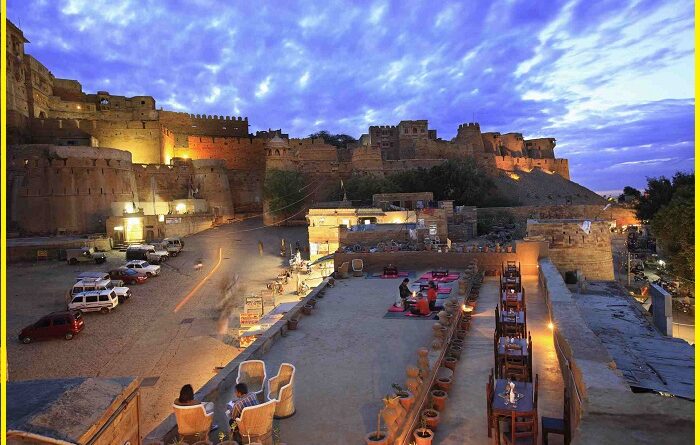
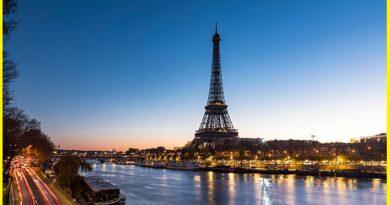
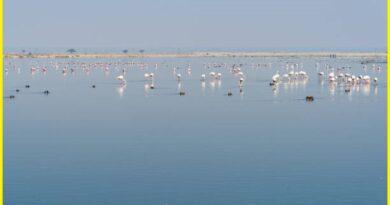
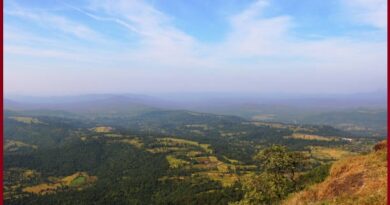
Pingback: Best Places to Visit in December in India - Geotourism